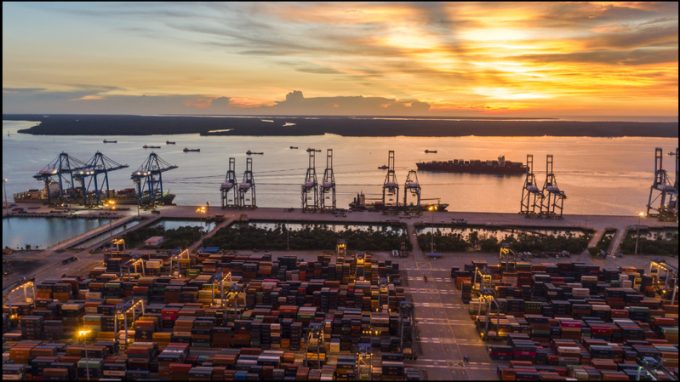
Fadhlur Rahman Abd Raffar | Dreamstime.com
By Angelo Mathais, India Correspondent, 18/06/2024
Soaring demand is allowing container lines serving Indian trades to flex their pricing muscles on intra-Asia services, especially out of China.
Average spot rates from North China (Tianjin) to West India (Nhava Sheva or Mundra) have exceeded $5,000 for a 40ft container booking, according to market sources.
The rate push is not just for Chinese ports alone. Prices for India-bound shipments from other Far East locations, such as Singapore, Port Klang and Hong Kong have rocketed.
For Singapore-India, carriers are now selling space at $4,500 per 40ft, a sharp jump from the $1,100 they were quoting last month.
Simply put, intra-Asia rates into India have generally seen increases of 200% to 250% over the past month, data from market sources reveals.
And vessel capacity remains acutely tight, because of fewer sailings and schedule disruptions, often causing cargo rollovers for Indian importers, according to shipper sources.
“Shipping costs from China have become a painful thorn for Indian imports,” one senior executive at a Mumbai-based industrial house told The Loadstar. “Nobody wants their production line affected, so we are being forced to pay higher freight rates.”
The source also noted that port congestion problems plaguing Singapore, Port Klang and other South-east Asia hubs had made sailing schedules erratic and transit times unpredictable.
“It’s a guessing game on cargo delivery schedules,” said the official.
And Jitendra Srivastava, CEO of Mumbai-based freight forwarder Triton Logistics & Maritime told The Loadstar the capacity-stressed situation for Indian shippers was expected to last until February.
As container lines increasingly concentrate on the lucrative Chinese trade, with more regional operators jumping onto the demand bandwagon, Indian ports are also seeing a rush of empty equipment outflows, particularly at Mundra Port, in some part, due to major lines repositioning into China.
“Empty evacuation means an additional move from the empty yard to the port, thus creating pressure on the dockside,” a port executive told The Loadstar.
Shortage of equipment will be a concern for Indian exporters, as trade prospects brighten. India’s merchandise export trade reported an impressive 9% year-on-year increase in May, according to new provisional government data.
“A positive growth momentum for the second month in a row on the back of buoyant order bookings goes to show the resilience of the export sector and Indian exporting community,” said Ashwani Kumar, president of the Federation of Indian Export Organisations.
Pushpank Kaushik, CEO of Hyderabad-based ship agent and forwarder Jassper Shipping, also believes this capacity pressure could cause some trade impacts for India, given that China remains its largest trading partner.
“The combination of high demand and limited capacity is resulting in increased costs and cargo delays,” he said. “Addressing vessel shortages is crucial to keep two-way trade flowing,” he added.
